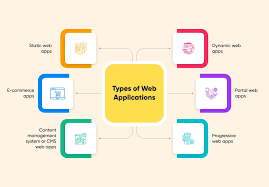Down Syndrome
Introduction
Website development frameworks provide a structured and efficient approach to building web applications. In this guide, we'll take you through the process of creating your first website using popular web development frameworks. You'll learn how to leverage these tools to streamline the development process and build robust, responsive, and dynamic websites.
Table of Contents
-
Understanding Web Development Frameworks
- What Are Web Development Frameworks?
- Benefits of Using Frameworks
- Popular Frameworks (e.g., React, Angular, Vue, Django, Ruby on Rails)
-
Choosing the Right Framework
- Project Requirements and Goals
- Comparing Front-End and Back-End Frameworks
- Learning Curve and Community Support
- Framework Ecosystem and Tools
-
Setting Up Your Development Environment
- Installing Required Software (Node.js, Python, Ruby)
- Creating a Development Workspace
- Version Control (Git and GitHub)
- Choosing an Integrated Development Environment (IDE)
-
Getting Started with Front-End Frameworks
- Introduction to React, Angular, and Vue
- Project Setup with Create React App, Angular CLI, Vue CLI
- Building User Interfaces with Components
- Handling State and Props
-
Routing and Navigation
- Implementing Routing with React Router, Angular Router, or Vue Router
- Creating Navigation Menus
- Handling Route Parameters and Query Strings
Conclusion
Building your first website with frameworks is a significant step toward becoming a proficient web developer. As you explore the topics covered in this guide, you'll gain the skills and knowledge needed to create dynamic and responsive web applications. Keep in mind that web development is a continually evolving field, so staying updated with emerging technologies and best practices is essential for your success. Best of luck in your journey to becoming a skilled website developer using frameworks!







